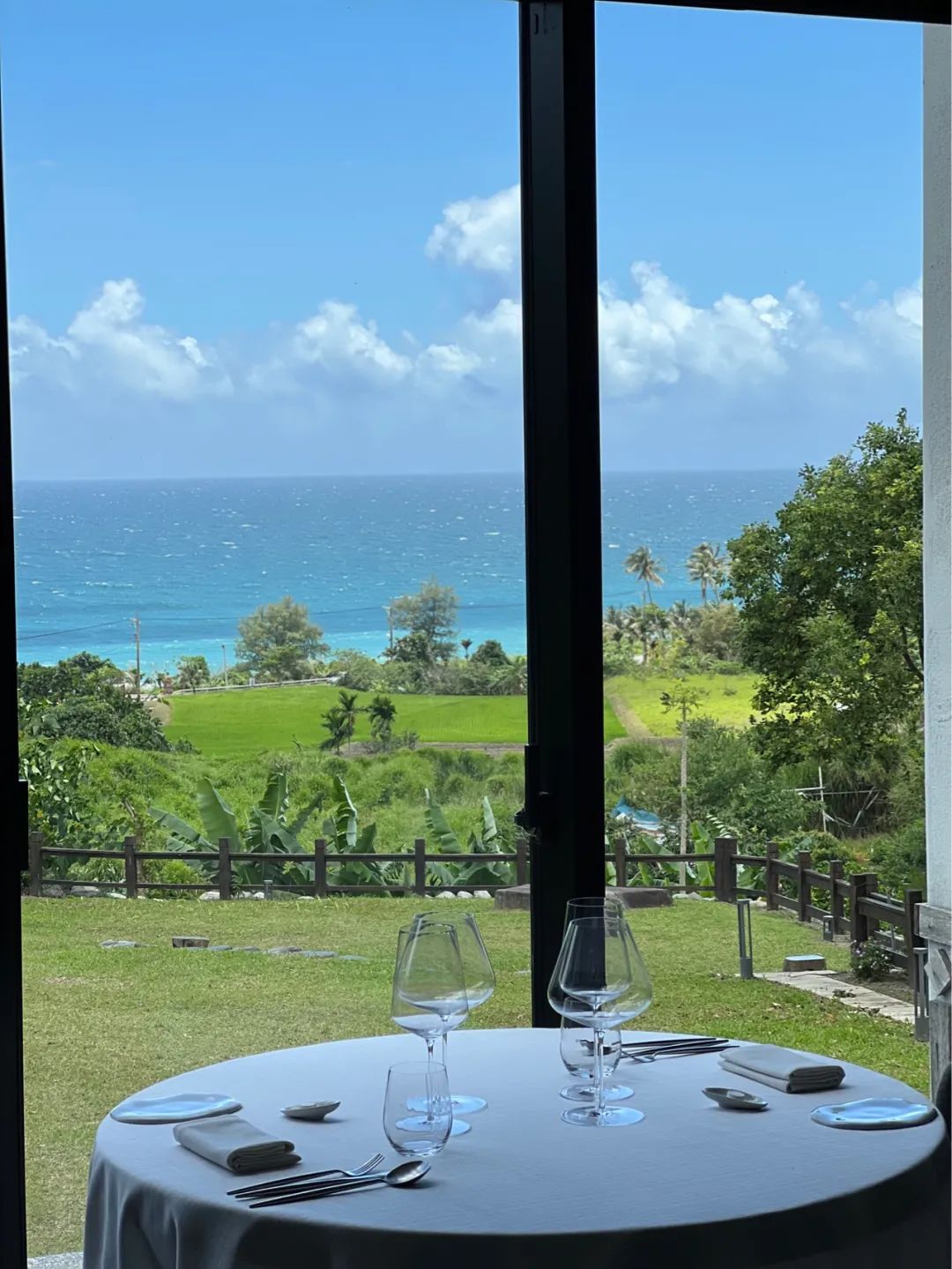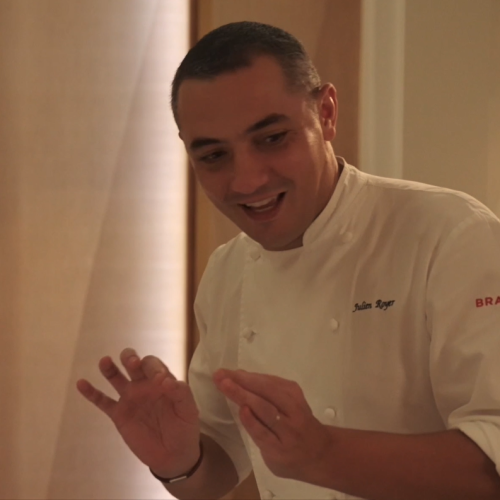An annual commitment? From Yunlin Railway Station, I travelled 1 hour south to Zuoying, Kaohsiung, before I took a five-minute transfer to a three-hour ride on the Puyuma Express of the Taiwan Railways. Not many people were on the train on a typical Monday morning. The day was bright, blessed with mild temperatures; the sun shed a soft glow onto the carriage which was swaying a little from side to side, heading to the east coast. Idyllic fields and white beaches from Hualien to Taitung whizzed by. Not a time I wasn’t awestruck by them, though this time traveling alone attached a different kind of tranquility to the trip.
When I got off the train in Yuli, Hualien, Tina, the manager of Sinasera24, was waiting for me at the station. I was so excited to get on the car and we drove all the way to Changbin in Taitung. The day was beautiful as we drove along the mountain road. On the other side of the road was the Pacific Ocean – shades of deep and baby blue set in glossy, undulating turquoise waves, my eyes busy capturing the breathtaking scenery and my mind busy memorizing everything. In less than 20 minutes we arrived at an unassuming villa, whose unbeatable sea view room was immediately soul-relaxing.



On the late afternoon before dinner started, I sat on the terrace outside the restaurant with Chef Yang Po-Wei (Nick Yang) and drank champagne in the sea breezes. Nick kindly suggested that I hold my empty glass so it wouldn’t be blown away by the wind. I smiled and he said it really did happen. I have visited Sinasera three times, and every time exploring the east coast reminds me of “How time flies!”
I was given a cute, hand-drawn menu designed by the Chef before the meal started. Each dish is described by a graphic element plus three key words – could be ingredient, colour, technique, or flavour. The dinner started with a sweet and tart amuse bouche made with Weightstone wine lees, vinegared pear, mackerel and celtuce.


The first course originally featured white jade snail from the local farms, but I don’t eat snails, so they substituted octopus for me. The dish was served with chargrilled zucchini and sautéed cucumber, garnished with nasturtium for a hint of wasabi. Coupled with rice cake made from seaweed and Changbin Jingang rice naturally dried in sea breezes, the warm, and creamy green sauce was made from zucchini and piper umbellatum, presenting their original freshness and spice.

Jelly|Bonito|Flying Fish is a variation on Chef Yang’s signature dish. The fast-swimming mahi-mahi fish harvested from Chenggong Fishing Port was cured and aged to preserve its pure and rich flavour before being sliced and rolled into a flower. The base jelly was made from seasonal mulberry and rose, blending fruity flavours with the foamy, smoky flying fish cream. A final sprinkling of bonitos added complexity. When I think of flying fish, I always recall the romantic and yet majestic lines of the poem If A Flying Fish Leaps Out Of The Sea that I read many years ago by Lee Zong-Rong. Naming this dish after the poem may also be appropriate. This version was a little heavier and more striking with layered flavours of acidity, creaminess and smokiness. To pair it with caviar should also work well.
Quality Yilan red shrimps were presented in sashimi, served with a rice salad made from red glutinous rice from the Tafalong Tribe in Guangfu Township, Hualien County, crisp diced green bamboo shoots and pickled seafood. The red shrimps were more geared towards Japanese style as they were marinated with bonito viscera, soy sauce and mirin. The rice salad and the shrimps didn’t add up to each other, though they would still taste delicious when eaten separately.
Oriental bonito from Chenggong Fishing Port was finely sliced, marinated in tamarind and smoked with rice stalks. The top was decorated with coriander blossoms and seedlings, and the chef’s favourite vinegared red onion, which he said is very representative of Taiwan’s produce. The beauty of Nick’s cooking is that he doesn’t compromise the best of ingredients for the sake of showing off culinary techniques. The cool, crisp and smoky sashimi were complemented by a sizzling hot white bean/banana croquette, again boasting local ingredients and contrasting textures. Nick’s cooking has been precise and well-thought out, but he continues to refine with detail and respect.


Next up was a pan-seared four-finger wide cutlassfish with seasonal purple asparagus. The asparagus was presented in three different ways: cooked in chicken stock to make a dense asparagus foam; fermented and chopped; slightly roasted. It was finished with crispy fried organic baby onions from Hualien and wild Artemisia Capillaris. The cutlassfish was a little bit done (perhaps because the fish could be easily dehydrated after it’s deboned), but the overall execution was superb. I wouldn’t be surprised to see it on the table of any three-starred restaurant. Sinasera’s capability of sourcing ingredients is comparable to that of any renowned restaurants in Tokyo. Nick seems to remind me of Japanese sushi chefs who tend to care very much about the quality of ingredients. In this respect, local producers are very important so it’s hard for him to leave the restaurant and cook as guest chef in other places. I asked him what he would do in such cases. “Ikejime the fish in the morning and bring it over,” he said.


The bread was no less impressive. It’s 70% aboriginal millet grown in Taitung’s Kinzang Township, which were grounded to produce a sticky effect and served warm with the texture of mochi and aroma of the grains.
Nick made an extra main course, where meaty abalone from Guishan Island was simmered overnight with kombu and garlic, before being chargrilled to soft-tender. The creamy risotto was made with abalone liver confit puree and native Taitung Jingang rice, although I preferred the very firm rice grains.
At some sushi restaurants, after the abalone dish, the chef will give you an onigiri (rice roll) to dip with the abalone liver sauce, sending the umami off the charts. Nicely placed in its shell on a white-blue wavy plate, the abalone was garnished with some chrysanthemum leaves on top for notes of crown daisy and springtime delight. It’s a pleasure to experience the healing power of food at any time like this.


Then the first main course entered. Only the breast and leg of Chiayi quail were used. The breast had been aged at low temperatures for a week to produce a tender and flavourful effect, before being seared and smoked until the meat gave a pinkish color. The quail leg, on the other hand, was served with ostrich and squab liver, and char-grilled for an intense yakitori flavour. With honey loquat and organic shallots on the side, the dish was finished off with a scoop of red wine sauce. Chef combined different parts of the quail on one plate and yet they were so coherent to each other. Already, one can admire Nick’s talent – a true chef is always able to experiment with food in his/her mind.


The second main course was wild langoustine, wrapped with crunchy puffed rice and deep fried for about a minute. The loose, translucent center and the sweet juice resembled pulp of lychee, demonstrating its umami trait. The puffed rice and chewy langoustine were aided by a rich mussel sauce and saffron mayonnaise for a powerful flavour portfolio. Hard to deny in any case.
Instead of putting the quail dish at last, Nick specially arranged the serving order of the two main courses according to the richness of the sauce, a wise move considering the “marginal effect of taste”. The dishes are always subtle and light under Nick’s hands.

The dessert was Strawberry Quartet, a mixed delight of sweet and sour with subtle bitterness. The strawberry is a variety that has been cultivated for many years by a strawberry farm in Fenglin, Hualien. Not a single part of the strawberry was wasted: the ice cream was made from roasted strawberry leaves, exuding a hint of matcha earthiness, and paired with dried, candied strawberry tips and fried brown sugar rice; the strawberry honey cake was served with lavender chantilly, drizzled with olive oil and garnished with rose petals, tasty but not quite outstanding in comparison; the strawberry salad blended sugar-roasted strawberries and mint leaves, with pickled chayote, white cheese, and candied sunflower seeds for texture; the final touch was a butter rich, crispy Arlette biscuit (puff pastry originating from the south of France) with air-dried strawberries. With the right amount of complexity and cohesiveness, the whole set of desserts added a satisfying finishing touch to the menu.


Sinasera should be among the top restaurants in any part of the world if you consider its menu, the range of ingredients, cooking techniques, and integration of the local culture. It’s been a long time since I’ve had such a stunning meal that touched me so deeply. With a little sigh of contentment, I drew the conclusion of my hearty dinner.
Nick shared that the restaurant team didn’t take the pandemic too panickily over the past two years. When there weren’t many guests, they would temporarily close the restaurant and went on investigational trips to explore ingredients and latent directions for new dishes. I remember I only managed to book a table four or five months in advance when I went back to Taiwan last year.
As new restaurants jump on the bandwagon of commercial appeal, Sinasera is dedicated to presenting the ingredients in their purest, original form. The east coast should be privileged to have such a restaurant that honors its rich food culture and heavenly scenery.


The Huadong region (usually refers to Hualien County and Taitung County) is home to a wide range of amazing fare, which I learn gradually from Chef Nick Yang. I am not sure if the following words are accurate enough to describe his efforts – digging into local produce and presenting them in their best forms. Almost four years in France speaks true of his excellent culinary aptitude and down-to-earth attitude, both reflected in his approach to the dishes. To my knowledge, Sinasera hosts appreciation events for all its local suppliers, which I don’t think many other restaurants in Taiwan do the same.
Nick mentioned that before he left Taiwan, he focused mainly on honing cooking techniques. After serving in the army in Taitung, he worked at La Bonne Etape, a one-starred restaurant located on the famous Napoleon road that runs from the French Alps to the Mediterranean Sea, before he became chef de partie at the three-starred restaurant Le Petit Nice in Marseille. Four years in France turned his focus to food itself, instead of techniques. He said that the head chef was able to change the menu every day depending on the ingredients available. Sinasera is launching an all-seafood menu in July and August, and Nick said he is ready to push the limits.

A few years ago, I visited Faviken (before its permanent closedown), a double Michelin-starred restaurant in Sweden, which was the closest Michelin restaurant to the Arctic Circle at the time. The dishes were extraordinary with pure flavours of the local produce. I joked with a group of food connoisseurs I met that day that we should all go there at least once a year, for food, and for health. Dining there creates a sense of comfort, freedom, and ease which never lets you feel lonely. I remember the menu has “real food” written on it.
As one of the few destination restaurants in Taiwan, Sinasera deserves to shine with its out-of-the-world dining experience and sincere and beautiful dishes it has to offer.
-END-











